Kalyan Sunkavalli
Adobe Research
Neural Directional Encoding for Efficient and Accurate View-Dependent Appearance Modeling
May 23, 2024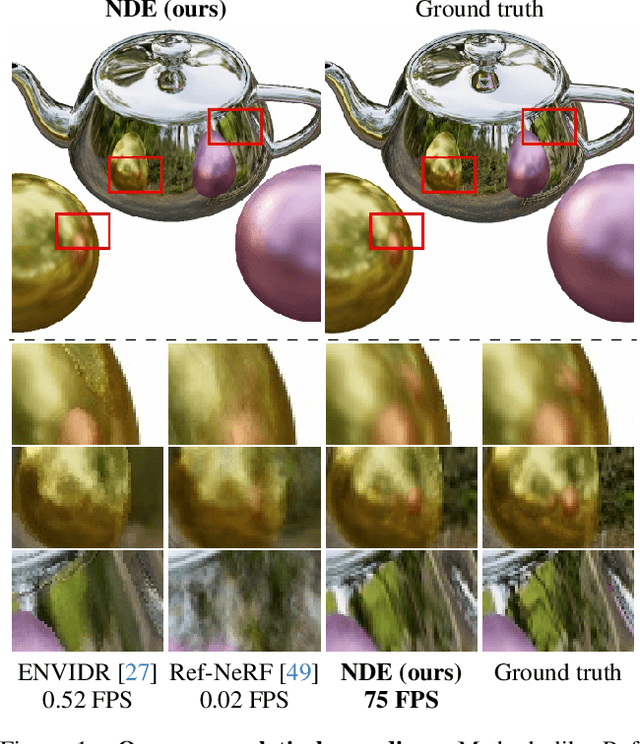
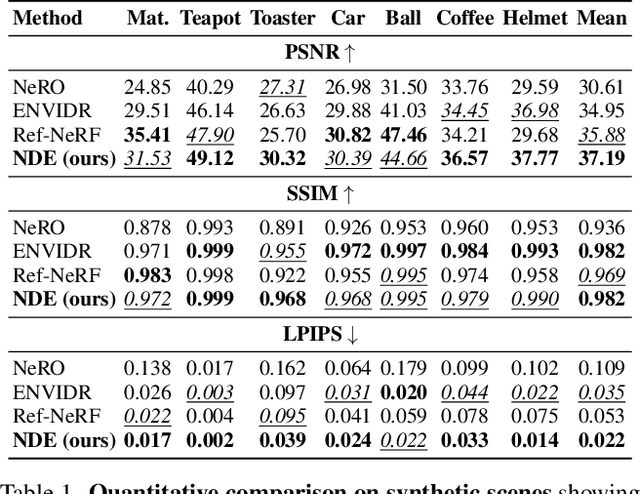
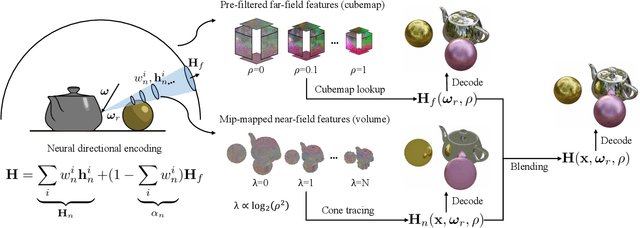
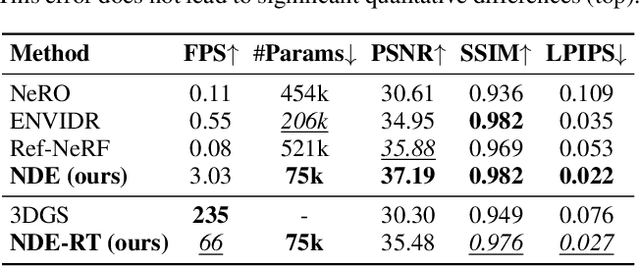
Abstract:Novel-view synthesis of specular objects like shiny metals or glossy paints remains a significant challenge. Not only the glossy appearance but also global illumination effects, including reflections of other objects in the environment, are critical components to faithfully reproduce a scene. In this paper, we present Neural Directional Encoding (NDE), a view-dependent appearance encoding of neural radiance fields (NeRF) for rendering specular objects. NDE transfers the concept of feature-grid-based spatial encoding to the angular domain, significantly improving the ability to model high-frequency angular signals. In contrast to previous methods that use encoding functions with only angular input, we additionally cone-trace spatial features to obtain a spatially varying directional encoding, which addresses the challenging interreflection effects. Extensive experiments on both synthetic and real datasets show that a NeRF model with NDE (1) outperforms the state of the art on view synthesis of specular objects, and (2) works with small networks to allow fast (real-time) inference. The project webpage and source code are available at: \url{https://lwwu2.github.io/nde/}.
GS-LRM: Large Reconstruction Model for 3D Gaussian Splatting
Apr 30, 2024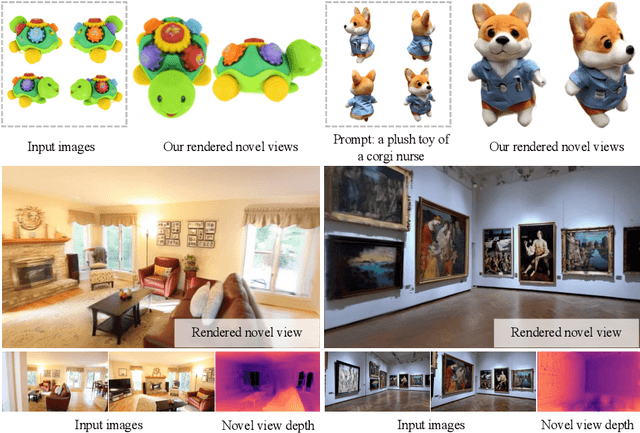


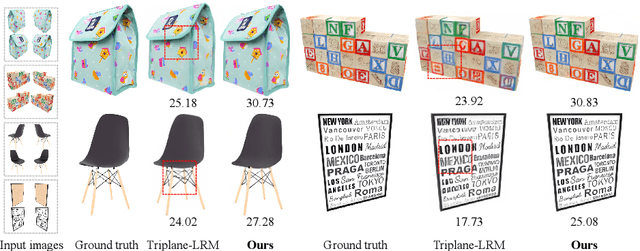
Abstract:We propose GS-LRM, a scalable large reconstruction model that can predict high-quality 3D Gaussian primitives from 2-4 posed sparse images in 0.23 seconds on single A100 GPU. Our model features a very simple transformer-based architecture; we patchify input posed images, pass the concatenated multi-view image tokens through a sequence of transformer blocks, and decode final per-pixel Gaussian parameters directly from these tokens for differentiable rendering. In contrast to previous LRMs that can only reconstruct objects, by predicting per-pixel Gaussians, GS-LRM naturally handles scenes with large variations in scale and complexity. We show that our model can work on both object and scene captures by training it on Objaverse and RealEstate10K respectively. In both scenarios, the models outperform state-of-the-art baselines by a wide margin. We also demonstrate applications of our model in downstream 3D generation tasks. Our project webpage is available at: https://sai-bi.github.io/project/gs-lrm/ .
MeshLRM: Large Reconstruction Model for High-Quality Mesh
Apr 18, 2024



Abstract:We propose MeshLRM, a novel LRM-based approach that can reconstruct a high-quality mesh from merely four input images in less than one second. Different from previous large reconstruction models (LRMs) that focus on NeRF-based reconstruction, MeshLRM incorporates differentiable mesh extraction and rendering within the LRM framework. This allows for end-to-end mesh reconstruction by fine-tuning a pre-trained NeRF LRM with mesh rendering. Moreover, we improve the LRM architecture by simplifying several complex designs in previous LRMs. MeshLRM's NeRF initialization is sequentially trained with low- and high-resolution images; this new LRM training strategy enables significantly faster convergence and thereby leads to better quality with less compute. Our approach achieves state-of-the-art mesh reconstruction from sparse-view inputs and also allows for many downstream applications, including text-to-3D and single-image-to-3D generation. Project page: https://sarahweiii.github.io/meshlrm/
LightIt: Illumination Modeling and Control for Diffusion Models
Mar 25, 2024Abstract:We introduce LightIt, a method for explicit illumination control for image generation. Recent generative methods lack lighting control, which is crucial to numerous artistic aspects of image generation such as setting the overall mood or cinematic appearance. To overcome these limitations, we propose to condition the generation on shading and normal maps. We model the lighting with single bounce shading, which includes cast shadows. We first train a shading estimation module to generate a dataset of real-world images and shading pairs. Then, we train a control network using the estimated shading and normals as input. Our method demonstrates high-quality image generation and lighting control in numerous scenes. Additionally, we use our generated dataset to train an identity-preserving relighting model, conditioned on an image and a target shading. Our method is the first that enables the generation of images with controllable, consistent lighting and performs on par with specialized relighting state-of-the-art methods.
PF-LRM: Pose-Free Large Reconstruction Model for Joint Pose and Shape Prediction
Nov 23, 2023



Abstract:We propose a Pose-Free Large Reconstruction Model (PF-LRM) for reconstructing a 3D object from a few unposed images even with little visual overlap, while simultaneously estimating the relative camera poses in ~1.3 seconds on a single A100 GPU. PF-LRM is a highly scalable method utilizing the self-attention blocks to exchange information between 3D object tokens and 2D image tokens; we predict a coarse point cloud for each view, and then use a differentiable Perspective-n-Point (PnP) solver to obtain camera poses. When trained on a huge amount of multi-view posed data of ~1M objects, PF-LRM shows strong cross-dataset generalization ability, and outperforms baseline methods by a large margin in terms of pose prediction accuracy and 3D reconstruction quality on various unseen evaluation datasets. We also demonstrate our model's applicability in downstream text/image-to-3D task with fast feed-forward inference. Our project website is at: https://totoro97.github.io/pf-lrm .
Instant3D: Fast Text-to-3D with Sparse-View Generation and Large Reconstruction Model
Nov 23, 2023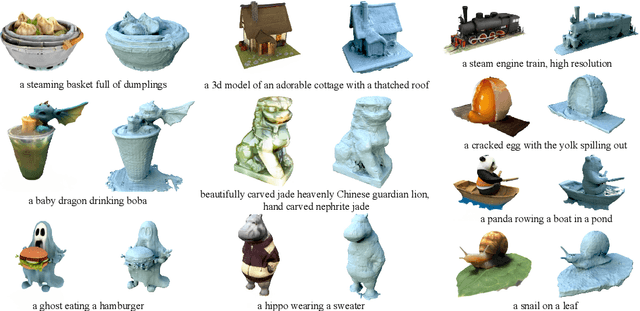


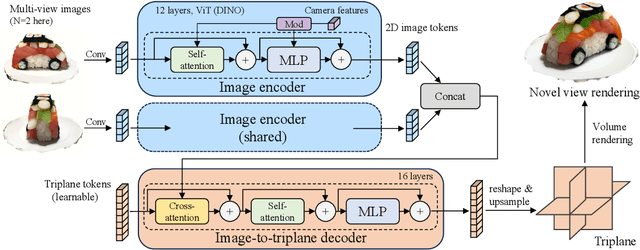
Abstract:Text-to-3D with diffusion models has achieved remarkable progress in recent years. However, existing methods either rely on score distillation-based optimization which suffer from slow inference, low diversity and Janus problems, or are feed-forward methods that generate low-quality results due to the scarcity of 3D training data. In this paper, we propose Instant3D, a novel method that generates high-quality and diverse 3D assets from text prompts in a feed-forward manner. We adopt a two-stage paradigm, which first generates a sparse set of four structured and consistent views from text in one shot with a fine-tuned 2D text-to-image diffusion model, and then directly regresses the NeRF from the generated images with a novel transformer-based sparse-view reconstructor. Through extensive experiments, we demonstrate that our method can generate diverse 3D assets of high visual quality within 20 seconds, which is two orders of magnitude faster than previous optimization-based methods that can take 1 to 10 hours. Our project webpage: https://jiahao.ai/instant3d/.
DMV3D: Denoising Multi-View Diffusion using 3D Large Reconstruction Model
Nov 15, 2023Abstract:We propose \textbf{DMV3D}, a novel 3D generation approach that uses a transformer-based 3D large reconstruction model to denoise multi-view diffusion. Our reconstruction model incorporates a triplane NeRF representation and can denoise noisy multi-view images via NeRF reconstruction and rendering, achieving single-stage 3D generation in $\sim$30s on single A100 GPU. We train \textbf{DMV3D} on large-scale multi-view image datasets of highly diverse objects using only image reconstruction losses, without accessing 3D assets. We demonstrate state-of-the-art results for the single-image reconstruction problem where probabilistic modeling of unseen object parts is required for generating diverse reconstructions with sharp textures. We also show high-quality text-to-3D generation results outperforming previous 3D diffusion models. Our project website is at: https://justimyhxu.github.io/projects/dmv3d/ .
LRM: Large Reconstruction Model for Single Image to 3D
Nov 08, 2023Abstract:We propose the first Large Reconstruction Model (LRM) that predicts the 3D model of an object from a single input image within just 5 seconds. In contrast to many previous methods that are trained on small-scale datasets such as ShapeNet in a category-specific fashion, LRM adopts a highly scalable transformer-based architecture with 500 million learnable parameters to directly predict a neural radiance field (NeRF) from the input image. We train our model in an end-to-end manner on massive multi-view data containing around 1 million objects, including both synthetic renderings from Objaverse and real captures from MVImgNet. This combination of a high-capacity model and large-scale training data empowers our model to be highly generalizable and produce high-quality 3D reconstructions from various testing inputs including real-world in-the-wild captures and images from generative models. Video demos and interactable 3D meshes can be found on this website: https://yiconghong.me/LRM/.
Controllable Dynamic Appearance for Neural 3D Portraits
Sep 21, 2023Abstract:Recent advances in Neural Radiance Fields (NeRFs) have made it possible to reconstruct and reanimate dynamic portrait scenes with control over head-pose, facial expressions and viewing direction. However, training such models assumes photometric consistency over the deformed region e.g. the face must be evenly lit as it deforms with changing head-pose and facial expression. Such photometric consistency across frames of a video is hard to maintain, even in studio environments, thus making the created reanimatable neural portraits prone to artifacts during reanimation. In this work, we propose CoDyNeRF, a system that enables the creation of fully controllable 3D portraits in real-world capture conditions. CoDyNeRF learns to approximate illumination dependent effects via a dynamic appearance model in the canonical space that is conditioned on predicted surface normals and the facial expressions and head-pose deformations. The surface normals prediction is guided using 3DMM normals that act as a coarse prior for the normals of the human head, where direct prediction of normals is hard due to rigid and non-rigid deformations induced by head-pose and facial expression changes. Using only a smartphone-captured short video of a subject for training, we demonstrate the effectiveness of our method on free view synthesis of a portrait scene with explicit head pose and expression controls, and realistic lighting effects. The project page can be found here: http://shahrukhathar.github.io/2023/08/22/CoDyNeRF.html
NeuManifold: Neural Watertight Manifold Reconstruction with Efficient and High-Quality Rendering Support
May 26, 2023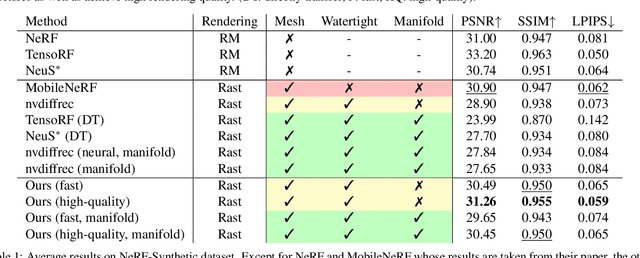
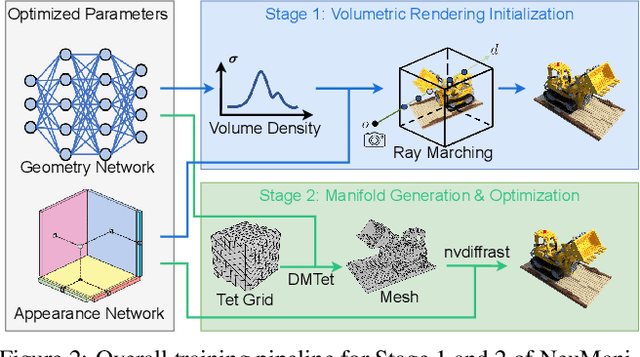

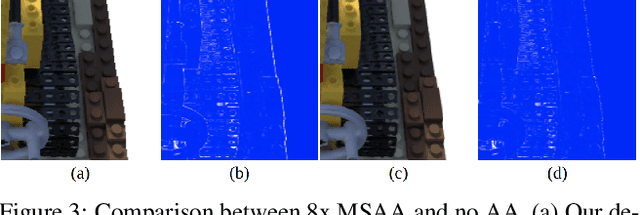
Abstract:We present a method for generating high-quality watertight manifold meshes from multi-view input images. Existing volumetric rendering methods are robust in optimization but tend to generate noisy meshes with poor topology. Differentiable rasterization-based methods can generate high-quality meshes but are sensitive to initialization. Our method combines the benefits of both worlds; we take the geometry initialization obtained from neural volumetric fields, and further optimize the geometry as well as a compact neural texture representation with differentiable rasterizers. Through extensive experiments, we demonstrate that our method can generate accurate mesh reconstructions with faithful appearance that are comparable to previous volume rendering methods while being an order of magnitude faster in rendering. We also show that our generated mesh and neural texture reconstruction is compatible with existing graphics pipelines and enables downstream 3D applications such as simulation. Project page: https://sarahweiii.github.io/neumanifold/
 Add to Chrome
Add to Chrome Add to Firefox
Add to Firefox Add to Edge
Add to Edge